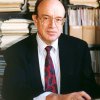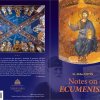THE ARCHBISHOPRIC
Serbian Church existed as an Archbishopric from 1219-1346. During that period twelve consecutive archbishops occupied the throne of Saint Sava and each of them headed the Church during the reign of some of the most famous kings of Nemanjic (Nemanyich) Dynasty.
Archbishopric See was originally in monastery Zica, but in 1252, owing to impending dangers of Tatar and Kuman invasions, it was, for security reasons, moved to Pec (Pech) — a monastery located at the entrance to the remote Rugova Canyon. All archbishops heading the Serbian Church were experienced spiritual fathers and monks who were previously abbots either at Hilandar or at Studenica monasteries. Two of them, Nicodim (1317-1324, Nicodemus) and Danilo II (1324-1337, Daniel), both archbishops during reigns of King Milutin and King Stefan Decanski, were prominent literary authors and translators. Archbishop Danilo II, previously abbot of Hilandar and a diplomat, left behind him his famous “Biographies of Serbian Kings and Archbishops”, known also as “Ancient Books” (Knjige Starostavne). Period of the Archbishopric coincided with the epoch in Serbian history when many a famous king ruled the Serbian Kingdom: King Vladislav (1233-1243), King Uros I (1243-1276, Urosh), King Dragutin (1276-1282). Numerous famous monasteries were erected then: Mileseva (founder and patron — King Vladislav), Sopocani (Sopochany; 1265, founder and patron — King Uros), Moraca (Moracha; 1252, founder and patron Knez Stefan), King Dragutin’s memorials were monasteries Raca (Racha), Tronosa (Tronosha), Lovnica (Lovnitsa), Ozren, and Tavna. King Milutin (1282-1321) built the Church of the Theotokos (Bogorodicina crkva) in Skoplje, the new Hilandar church, Theotokos of Ljevis (Lyevish, Bogorodica Ljeviska) in Prizren, Old Nagoricano (1313, Nagorichano, Staro Nagoricano), Banjska (Banyska, 1313-1317), Gracanica (Grachanytsa, 1315), The Holy Archangels (1311, Sveti Arhandjeli) in Jerusalem. King Stefan Decanski built monastery Decani (1327-1331, Dechany).




